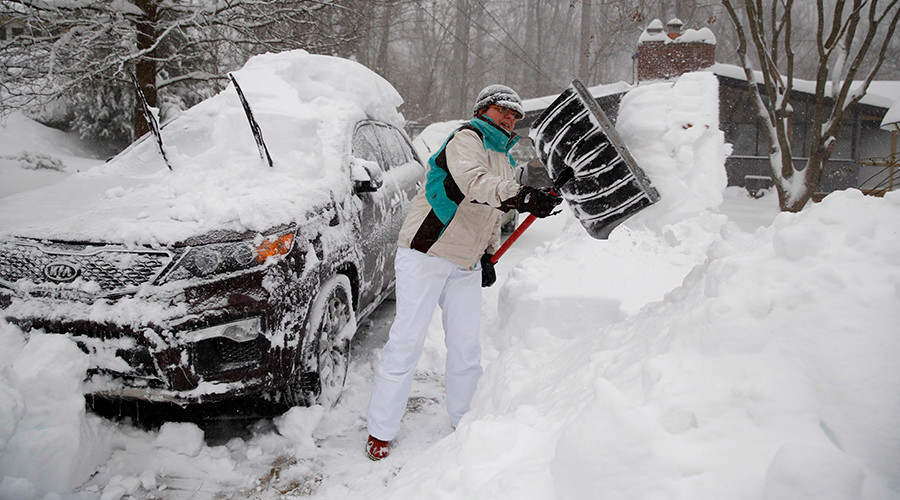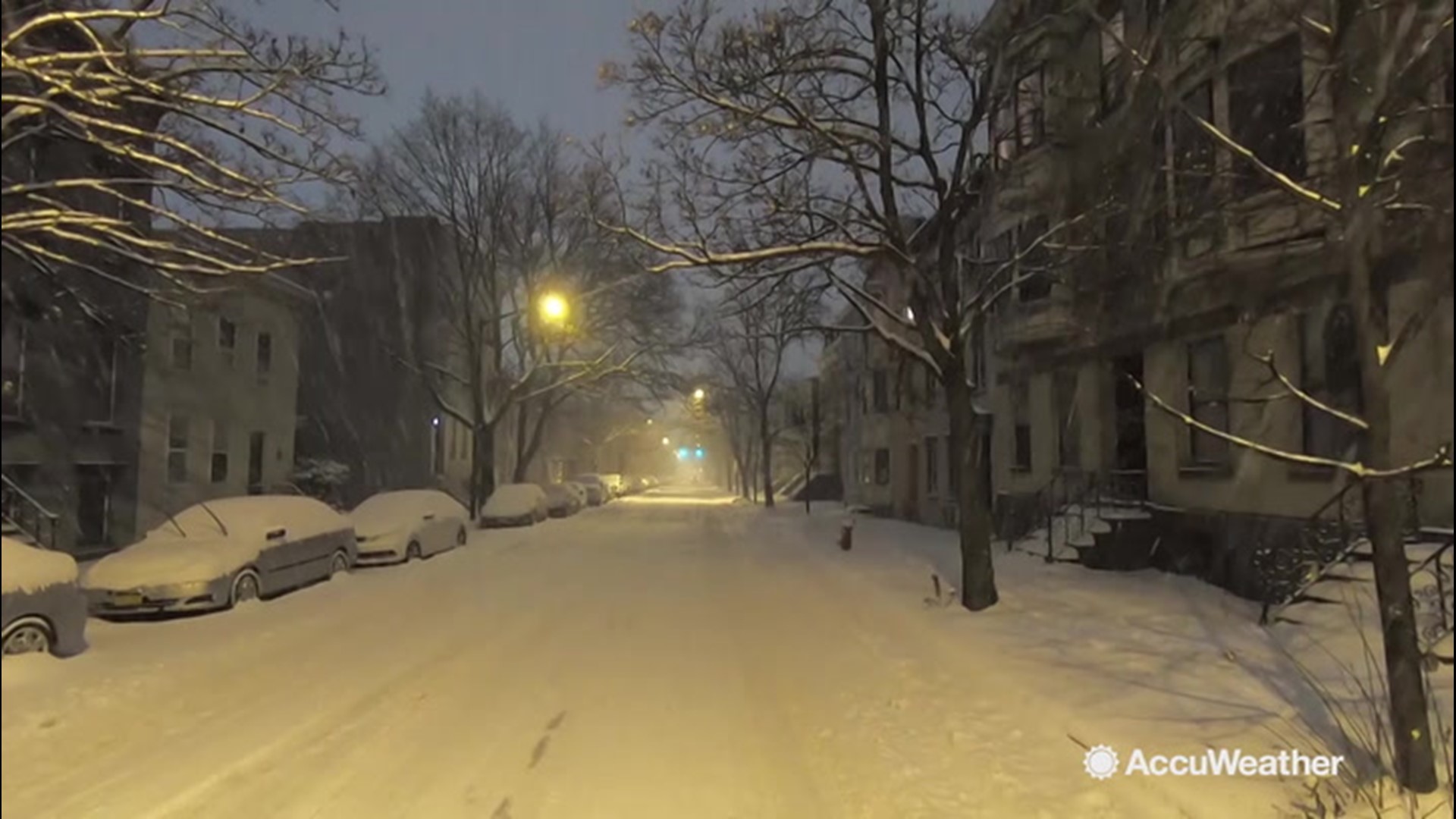Your Snowstorm vision images are available. Snowstorm vision are a topic that is being searched for and liked by netizens now. You can Get the Snowstorm vision files here. Find and Download all free vectors.
If you’re looking for snowstorm vision pictures information linked to the snowstorm vision topic, you have come to the ideal blog. Our site frequently provides you with suggestions for refferencing the highest quality video and image content, please kindly surf and find more informative video articles and images that fit your interests.
Snowstorm Vision. Snow blindness, also called arc eye or photokeratitis, is a painful eye condition caused by overexposure to ultraviolet (uv) light. Visual snow is typically reported to be present continuously, even with both eyes closed (and even while dreaming according to some reports). When too much uv light hits the transparent outer layer of your. In addition to the static, or “snow”, affected individuals can experience additional visual symptoms such as.
 DC Blizzard DEC 2009 Washington DC Snowfall December 1820 From flickr.com
DC Blizzard DEC 2009 Washington DC Snowfall December 1820 From flickr.com
V isual snow is a poetic name for a strange visual anomaly. People with visual snow syndrome see many flickering tiny dots, like snow or static, that fill the entire visual field. Other visual symptoms include seeing blobs of varying size and shape (floaters) and continuing to see images after they are out of. Visual snow syndrome affects the way the visual information is processed by the brain and eyes. Visual snow is typically reported to be present continuously, even with both eyes closed (and even while dreaming according to some reports). Visual snow, also known as visual static, is an uncommon neurological condition in which the affected individuals see white, black, transparent, or coloured dots across the whole visual fields.
When too much uv light hits the transparent outer layer of your.
Visual snow is a hallucinogenic condition within the neural system, i.e., the subject perceives something that is not present in the actual visual scene presented to the sensory system. Visual snow is a neurological disorder characterized by a continuous visual disturbance that occupies the entire visual field and is described as tiny flickering dots that resemble the noise of a detuned analogue television. Visual snow, also known as visual static, is an uncommon neurological condition in which the affected individuals see white, black, transparent, or coloured dots across the whole visual fields. When too much uv light hits the transparent outer layer of your. Other visual symptoms include seeing blobs of varying size and shape (floaters) and continuing to see images after they are out of. Snow blindness, also called arc eye or photokeratitis, is a painful eye condition caused by overexposure to ultraviolet (uv) light.
 Source: flickr.com
Source: flickr.com
Visual snow, also known as visual static, is an uncommon neurological condition in which the affected individuals see white, black, transparent, or coloured dots across the whole visual fields. Visual snow syndrome affects the way the visual information is processed by the brain and eyes. Visual snow, also known as visual static, is an uncommon neurological condition in which the affected individuals see white, black, transparent, or coloured dots across the whole visual fields. Migraine and tinnitus are common comorbidities and are both associated with a more severe presentation of the. V isual snow is a poetic name for a strange visual anomaly.
 Source: rt.com
Source: rt.com
Visual snow, also known as visual static, is an uncommon neurological condition in which the affected individuals see white, black, transparent, or coloured dots across the whole visual fields. V isual snow is a poetic name for a strange visual anomaly. People with visual snow syndrome see many flickering tiny dots, like snow or static, that fill the entire visual field. Other visual symptoms include seeing blobs of varying size and shape (floaters) and continuing to see images after they are out of. The condition is typically always present and has no known cure.
 Source: reference.com
Source: reference.com
In addition to the static, or “snow”, affected individuals can experience additional visual symptoms such as. Visual snow syndrome affects the way the visual information is processed by the brain and eyes. Snow blindness, also called arc eye or photokeratitis, is a painful eye condition caused by overexposure to ultraviolet (uv) light. The condition is typically always present and has no known cure. When too much uv light hits the transparent outer layer of your.
 Source: successwithcrm.com
Source: successwithcrm.com
Visual snow is a hallucinogenic condition within the neural system, i.e., the subject perceives something that is not present in the actual visual scene presented to the sensory system. Visual snow is a neurological disorder characterized by a continuous visual disturbance that occupies the entire visual field and is described as tiny flickering dots that resemble the noise of a detuned analogue television. Visual snow is typically reported to be present continuously, even with both eyes closed (and even while dreaming according to some reports). People with visual snow syndrome see many flickering tiny dots, like snow or static, that fill the entire visual field. When too much uv light hits the transparent outer layer of your.
 Source: patch.com
Source: patch.com
People with visual snow syndrome see many flickering tiny dots, like snow or static, that fill the entire visual field. People with visual snow syndrome see many flickering tiny dots, like snow or static, that fill the entire visual field. Other visual symptoms include seeing blobs of varying size and shape (floaters) and continuing to see images after they are out of. V isual snow is a poetic name for a strange visual anomaly. When too much uv light hits the transparent outer layer of your.
 Source: rosslandnews.com
Source: rosslandnews.com
When too much uv light hits the transparent outer layer of your. In addition to the static, or “snow”, affected individuals can experience additional visual symptoms such as. People with visual snow syndrome see many flickering tiny dots, like snow or static, that fill the entire visual field. Visual snow is typically reported to be present continuously, even with both eyes closed (and even while dreaming according to some reports). Visual snow syndrome affects the way the visual information is processed by the brain and eyes.
 Source: thestar.com
Source: thestar.com
The condition is typically always present and has no known cure. Visual snow syndrome affects the way the visual information is processed by the brain and eyes. Visual snow, also known as visual static, is an uncommon neurological condition in which the affected individuals see white, black, transparent, or coloured dots across the whole visual fields. The condition is typically always present and has no known cure. Visual snow is a neurological disorder characterized by a continuous visual disturbance that occupies the entire visual field and is described as tiny flickering dots that resemble the noise of a detuned analogue television.
 Source: grantland.com
Source: grantland.com
Visual snow syndrome affects the way the visual information is processed by the brain and eyes. Visual snow is a neurological disorder characterized by a continuous visual disturbance that occupies the entire visual field and is described as tiny flickering dots that resemble the noise of a detuned analogue television. When too much uv light hits the transparent outer layer of your. Visual snow is a hallucinogenic condition within the neural system, i.e., the subject perceives something that is not present in the actual visual scene presented to the sensory system. Visual snow syndrome affects the way the visual information is processed by the brain and eyes.
 Source: artsy.net
Source: artsy.net
In addition to the static, or “snow”, affected individuals can experience additional visual symptoms such as. V isual snow is a poetic name for a strange visual anomaly. Other visual symptoms include seeing blobs of varying size and shape (floaters) and continuing to see images after they are out of. In addition to the static, or “snow”, affected individuals can experience additional visual symptoms such as. Snow blindness, also called arc eye or photokeratitis, is a painful eye condition caused by overexposure to ultraviolet (uv) light.
 Source: rt.com
Source: rt.com
V isual snow is a poetic name for a strange visual anomaly. Visual snow is a hallucinogenic condition within the neural system, i.e., the subject perceives something that is not present in the actual visual scene presented to the sensory system. V isual snow is a poetic name for a strange visual anomaly. Migraine and tinnitus are common comorbidities and are both associated with a more severe presentation of the. Visual snow, also known as visual static, is an uncommon neurological condition in which the affected individuals see white, black, transparent, or coloured dots across the whole visual fields.
 Source: indianexpress.com
Source: indianexpress.com
In addition to the static, or “snow”, affected individuals can experience additional visual symptoms such as. Visual snow is typically reported to be present continuously, even with both eyes closed (and even while dreaming according to some reports). Visual snow is a hallucinogenic condition within the neural system, i.e., the subject perceives something that is not present in the actual visual scene presented to the sensory system. Snow blindness, also called arc eye or photokeratitis, is a painful eye condition caused by overexposure to ultraviolet (uv) light. When too much uv light hits the transparent outer layer of your.
 Source: pxhere.com
Source: pxhere.com
In addition to the static, or “snow”, affected individuals can experience additional visual symptoms such as. Visual snow syndrome affects the way the visual information is processed by the brain and eyes. The condition is typically always present and has no known cure. Visual snow is typically reported to be present continuously, even with both eyes closed (and even while dreaming according to some reports). Other visual symptoms include seeing blobs of varying size and shape (floaters) and continuing to see images after they are out of.
 Source: fotolia.com
Source: fotolia.com
Visual snow, also known as visual static, is an uncommon neurological condition in which the affected individuals see white, black, transparent, or coloured dots across the whole visual fields. Visual snow is typically reported to be present continuously, even with both eyes closed (and even while dreaming according to some reports). Other visual symptoms include seeing blobs of varying size and shape (floaters) and continuing to see images after they are out of. Visual snow is a hallucinogenic condition within the neural system, i.e., the subject perceives something that is not present in the actual visual scene presented to the sensory system. V isual snow is a poetic name for a strange visual anomaly.
 Source: inserra.com
Source: inserra.com
Visual snow is typically reported to be present continuously, even with both eyes closed (and even while dreaming according to some reports). In addition to the static, or “snow”, affected individuals can experience additional visual symptoms such as. Migraine and tinnitus are common comorbidities and are both associated with a more severe presentation of the. Visual snow is a neurological disorder characterized by a continuous visual disturbance that occupies the entire visual field and is described as tiny flickering dots that resemble the noise of a detuned analogue television. Other visual symptoms include seeing blobs of varying size and shape (floaters) and continuing to see images after they are out of.
 Source: ilovehatephoto.com
Source: ilovehatephoto.com
Visual snow is a neurological disorder characterized by a continuous visual disturbance that occupies the entire visual field and is described as tiny flickering dots that resemble the noise of a detuned analogue television. People with visual snow syndrome see many flickering tiny dots, like snow or static, that fill the entire visual field. The condition is typically always present and has no known cure. Visual snow, also known as visual static, is an uncommon neurological condition in which the affected individuals see white, black, transparent, or coloured dots across the whole visual fields. Other visual symptoms include seeing blobs of varying size and shape (floaters) and continuing to see images after they are out of.
 Source: charlesmarshall.net
Source: charlesmarshall.net
Visual snow is a neurological disorder characterized by a continuous visual disturbance that occupies the entire visual field and is described as tiny flickering dots that resemble the noise of a detuned analogue television. Visual snow is a hallucinogenic condition within the neural system, i.e., the subject perceives something that is not present in the actual visual scene presented to the sensory system. Visual snow, also known as visual static, is an uncommon neurological condition in which the affected individuals see white, black, transparent, or coloured dots across the whole visual fields. Visual snow syndrome affects the way the visual information is processed by the brain and eyes. Other visual symptoms include seeing blobs of varying size and shape (floaters) and continuing to see images after they are out of.
 Source: rt.com
Source: rt.com
V isual snow is a poetic name for a strange visual anomaly. V isual snow is a poetic name for a strange visual anomaly. People with visual snow syndrome see many flickering tiny dots, like snow or static, that fill the entire visual field. Visual snow, also known as visual static, is an uncommon neurological condition in which the affected individuals see white, black, transparent, or coloured dots across the whole visual fields. Visual snow is a hallucinogenic condition within the neural system, i.e., the subject perceives something that is not present in the actual visual scene presented to the sensory system.
 Source: jammuvision.com
Source: jammuvision.com
Visual snow syndrome affects the way the visual information is processed by the brain and eyes. Other visual symptoms include seeing blobs of varying size and shape (floaters) and continuing to see images after they are out of. Snow blindness, also called arc eye or photokeratitis, is a painful eye condition caused by overexposure to ultraviolet (uv) light. Visual snow is a neurological disorder characterized by a continuous visual disturbance that occupies the entire visual field and is described as tiny flickering dots that resemble the noise of a detuned analogue television. When too much uv light hits the transparent outer layer of your.
This site is an open community for users to share their favorite wallpapers on the internet, all images or pictures in this website are for personal wallpaper use only, it is stricly prohibited to use this wallpaper for commercial purposes, if you are the author and find this image is shared without your permission, please kindly raise a DMCA report to Us.
If you find this site good, please support us by sharing this posts to your favorite social media accounts like Facebook, Instagram and so on or you can also bookmark this blog page with the title snowstorm vision by using Ctrl + D for devices a laptop with a Windows operating system or Command + D for laptops with an Apple operating system. If you use a smartphone, you can also use the drawer menu of the browser you are using. Whether it’s a Windows, Mac, iOS or Android operating system, you will still be able to bookmark this website.





